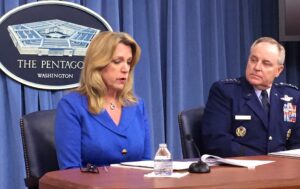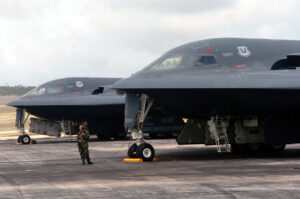China, Russia, and most Asian countries are rapidly modernizing and expanding their submarine fleets. At the same time, the supply of American submarines is going down while demand for American submarines is going up dramatically.
Today, we have 52 multi-mission “attack submarines” (SSNs) of the Los Angeles, Seawolf, and Virginia classes. Even with those 52 boats, we are only meeting 62 percent of our combatant commanders’ demand for submarines—and that is today. By 2029, our SSN fleet will have shrunk by 25 percent and we are going to be seven boats below the Navy’s official (but likely outdated) requirement for 48 SSNs. On top of that, we face a precipitous decline in undersea payload capacity. On top of that, as our SSN fleet shrinks, the Navy is also going to retire all four of its aging Ohio-class guided missile submarines, which together provide 616 missile tubes and roughly 60% of our undersea missile capacity.
America’s submarines can be anywhere, anytime. Should the need arise, they can carry out an increasingly wide range of missions at a time and place of our choosing. And thanks to their stealth and long endurance, our submarines can provide what no other element of the joint force can consistently deliver: persistent, undetected, assured access to all the world’s oceans and littorals. As “anti-access” challenges grow in the air and on the surface, the value of that undersea access can be expected to increase exponentially.
Last week, Adm. Harry Harris, our top commander in the Asia-Pacific region, told Congress that “submarines are the most important warfighting capability that we have.” Whether you think the future security environment is going to be characterized by irregular challenges like terrorism, high-end conflict in contested environments, or Cold War-style competition, our freedom of maneuver and action in the undersea domain—and our ability to reach from that domain into others—is something that is going to be increasingly valuable to the Navy and the nation.
In short, at a time when our submarine force is likely to be called upon to do more than ever, it is going to be smaller in size than it has been at any point since 1916. Modern submarines, of course, are individually far more capable than their predecessors—and ours are indisputably the best. But even with all the capabilities afforded by nuclear power and cutting-edge technologies, a submarine can still only in one place at one time, with only a fraction of the total fleet on station in the theater where and when it matters.
So, while we should be doing everything we can to maximize the reach and capability of each individual submarine and to augment them with unmanned systems, it is growing increasingly hard to escape the conclusion that we simply need more boats.
Fortunately, there may be opportunities to construct more Virginia-class attack submarines and mitigate the looming SSN shortfall. At present, the Navy is constructing 2 Virginia-class SSNs and decommissioning three older boats per year. Starting in fiscal year 2021, new SSN construction is planned to drop down to only one boat per year to free up funding and space in our shipyards for building the Ohio Replacement ballistic missile submarines that will carry 70 percent of our nuclear arsenal. Each one of these next-generation “boomers” will be two-and-a-half times as large as a Virginia-class submarine, and cost an average of $6.2 billion. The national imperative to deliver 12 of these massive boats between 2021 and 2035 is going to put a tremendous deal of pressure on the Navy and the submarine industrial base, complicating any effort to ramp up SSN production.
Despite these challenges and complications, our submarine industrial base still has the capacity to deliver several additional Virginia-class submarines between now and 2029, when the SSN shortfall will be at its worst. To exploit this opportunity, however, the Navy, industry, and Congress will need to work together to fund and sequence things in way that keeps workload and funding levels relatively smooth. Timing will be critical, and the Navy and industry will need to determine in which years it will be most cost-effective to procure additional SSNs. Meanwhile, to secure the required funding in an era of intense fiscal pressures, Congress and the Navy will need to squeeze every penny possible out of the Ohio Replacement program and fully exploit the money-saving authorities that Congress has granted to the National Sea Based Deterrence Fund.
Submarines are among our most important military assets, and the on-time, on-budget Virginia-class program has been a model of acquisition success. Adding additional Virginia-class submarines into the Navy’s underfunded shipbuilding plans will not be easy, but it is imperative that we try.
As Andrew Erickson, an expert on naval issues in Asia, testified before Congress last year: “If we’re not building at least two Virginia-class SSNs per year, we’re not being serious—and regional allies, partners, and China will see that clearly.” Increasing Virginia production is a viable option—even with Ohio Replacement underway—and we should all be seriously pursuing it.







